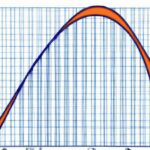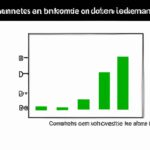The Gini coefficient is criticized because it fails to account for income distribution nuances. It might oversimplify complex economic disparities and overlooks the impacts of discrimination and societal structures. This metric does not distinguish between various sources of income, like wages, capital gains, or inheritance. It also disregards non-monetary factors influencing individual well-being, such as access to healthcare or education. Critics argue that the Gini coefficient masks inequalities within specific demographic groups or regions. Policymakers should use caution when relying solely on this measure to assess inequality and design interventions. Further research and supplementary metrics can provide a more comprehensive understanding of economic disparities.
Table of Contents
- Data Sensitivity
- Insensitivity to Changes
- Lack of Natural Interpretation
- Non-Inclusivity
- Uneven Distribution
(CNA Explains: What's the Gini coefficient?)
The Gini coefficient provides valuable insights into income inequality levels within a population. However, it comes with several limitations that need to be acknowledged. One such limitation is its failure to capture the full complexity of wealth distribution within a society. The coefficient’s reliance on income data alone overlooks other vital factors like assets, housing, and access to resources, painting an incomplete picture of economic disparities.
Moreover, the Gini coefficient assumes a linear relationship between inequality measures, which may not always hold true in real-world scenarios. This oversimplification can lead to misleading interpretations and policy decisions that do not address the root causes of inequality effectively.
Another significant drawback is the coefficient’s inability to account for cultural and social nuances that influence wealth distribution. Factors such as historical contexts, institutional biases, and systemic discrimination can impact inequality levels but are not captured adequately by the Gini index.
Additionally, the Gini coefficient does not consider the impact of government policies, tax structures, and social welfare programs on income distribution. Ignoring these crucial determinants can result in an inaccurate assessment of inequality trends and hamper efforts to implement targeted interventions to reduce disparities.
In conclusion, while the Gini coefficient is a valuable tool for measuring income inequality, it is essential to recognize its limitations and supplement its analysis with additional metrics and contextual information to gain a more comprehensive understanding of economic disparities within a society.
Data Sensitivity
Data sensitivity is a critical aspect that often gets overlooked in discussions involving the limitations of the Gini coefficient. The raw numbers and calculations don’t always capture the full complexity of social inequality because they fail to account for the nuanced nature of data sensitivity.
When we talk about data sensitivity, we are shining a light on the inherent vulnerability embedded within statistical analyses. It’s not just about crunching numbers; it’s about understanding that behind every data point lies a human experience, emotions, and vulnerabilities waiting to be uncovered.
Imagine a single mom struggling to make ends meet, her story reduced to a mere statistic in a socioeconomic report. The Gini coefficient may quantify her income disparity relative to others, but it fails to encapsulate the daily challenges she faces or the resilience she embodies in navigating an unequal world.
Data sensitivity urges us to look beyond the numerical surface and consider the ethical implications of reducing complex social realities into abstract figures. It reminds us that each data point represents real people with unique stories, struggles, and triumphs — not just dots on a graph plotting wealth distribution.
The danger of overlooking data sensitivity lies in perpetuating dehumanization through statistics. When we detach ourselves from the emotional core of data, we risk losing sight of those most affected by inequality — individuals who deserve recognition beyond statistical significance.
Incorporating data sensitivity into discussions around the Gini coefficient demands empathy, curiosity, and humility. It requires us to approach quantitative analysis with a mindful awareness of its limitations in capturing lived experiences accurately.
By embracing data sensitivity as an integral part of our analytical toolkit, we can foster more meaningful conversations about societal inequalities and move towards solutions that honor human dignity rather than reducing individuals to mere datapoints on a chart.
Insensitivity to Changes
There is a crucial aspect often overlooked when relying solely on the Gini coefficient to measure income inequality: insensitivity to changes. This limitation casts a shadow over the accuracy of interpreting shifts in equality dynamics accurately. Imagine looking through a dimly lit room searching for your keys – you might grope around for them, but without enough light, details fade away, blurring distinctions between objects.
Similarly, the Gini coefficient struggles with capturing nuanced alterations within society’s income distribution landscape. It serves as a snapshot frozen in time, lacking the finesse to detect subtle transformations unfolding beneath its static facade. It’s like trying to capture the essence of shifting clouds with just one photograph; nuances and intricacies get lost in this single frame.
When changes occur—whether due to economic policies or societal shifts—the Gini coefficient remains somewhat impervious to these fluctuations. It stands stoic amidst swirling winds of change, unable to adapt swiftly enough to reflect evolving realities on the ground. Picture a majestic oak tree firmly rooted in the earth; despite gusts of wind shaking its branches, it remains steadfast—an emblem of resilience against external forces.
This insensitivity can lead us astray when interpreting data trends—a small perturbation may go unnoticed initially but could ripple into significant effects over time. Like ripples spreading across a calm pond after a pebble’s gentle kiss breaks its surface tension, seemingly minor disturbances can cascade into widespread consequences if left unaddressed or misinterpreted.
Moreover, relying solely on the Gini coefficient risks oversimplifying complex social phenomena related to income inequality. It’s akin to reducing an intricate painting down to mere black and white sketches—losing shades that give depth and meaning beyond superficial observations alone.
In our quest for understanding societal disparities and designing responsive interventions tailored towards fostering equitable opportunities for all individuals, we must acknowledge and navigate around this limitation thoughtfully. Sailing blindfolded through turbulent waters carries inherent risks; similarly, basing critical decisions solely on Gini coefficients without considering their insensitivity may steer us off course from meaningful insights needed for informed action.
In conclusion…
Lack of Natural Interpretation
The limitations of the Gini coefficient bring into focus the challenge posed by the lack of a natural interpretation. Unlike a simple percentage or ratio that everyone can easily grasp, the Gini coefficient operates in a realm that demands deeper understanding and explanation. It’s like trying to decipher an intricate piece of art where each line and shade holds significant meaning.
When you look at the numerical output of a Gini coefficient calculation, it may seem abstract and detached from real-life experiences. The absence of a clear, intuitive way to explain its implications makes it harder for many people to relate to its significance. It’s as if you’re reading a foreign language without any translation guide – feeling disconnected and puzzled.
Imagine standing in front of a complex mathematical formula with symbols and variables dancing before your eyes. You strain to make sense of it all, but there’s no roadmap to lead you through this bewildering terrain. That’s how some individuals experience when confronted with the enigmatic nature of the Gini coefficient.
This lack of natural interpretation creates a barrier between ordinary folks and the insights offered by inequality measurements. Without relatable analogies or concrete examples to anchor our understanding, we risk losing sight of why these metrics matter in shaping policies and interventions aimed at promoting fairness and social justice.
It’s akin to wandering through dense fog where shapes loom vaguely ahead, teasing us with their elusive forms. We grope blindly for solid ground beneath our feet, craving clarity amidst confusion. In much the same way, grappling with the complexities inherent in interpreting Gini coefficients leaves us yearning for illumination amid obscurity.
To bridge this gap effectively requires not just statistical expertise but also storytelling finesse – weaving narratives that humanize data points and breathe life into abstract concepts. By infusing empathy into our explanations and illustrating scenarios that resonate with people’s lived experiences, we can unlock doors previously closed off by jargon-laden terminology.
In essence, confronting the issue of lacking natural interpretation within the realm of Gini coefficients beckons us to embrace creativity alongside analysis – blending logic with emotion to craft compelling narratives that illuminate rather than obscure. Only then can we hope to demystify these esoteric measures and invite broader conversations about equity and inclusion into our collective consciousness.
(Understanding the Gini Coefficient)
Non-Inclusivity
Navigating the complexities of measuring income inequality, we delve into a critical aspect often overlooked – non-inclusivity. The Gini coefficient, with its numerical precision, fails to encapsulate the lived experiences of marginalized communities and those at the fringes of society.
Picture this: a single mother working multiple jobs just to put food on the table for her children. Her relentless efforts go unnoticed in traditional economic metrics like the Gini coefficient. She falls through the cracks because her struggles are not quantifiable in simple numbers.
Non-inclusivity within the framework of the Gini coefficient mirrors society’s blind spots towards those who face systemic barriers to economic success. It dismisses individuals grappling with discrimination based on race, gender, disability or other factors that influence their access to resources and opportunities.
As we scrutinize these limitations, emotions stir – empathy for those sidelined by statistical averages and frustration at an incomplete portrayal of true inequality. The cold calculations fail to capture stories etched with resilience and perseverance against all odds.
The absence of voices from underrepresented groups distorts our understanding of income distribution dynamics. Imagine vibrant cultures silenced by statistical indifference or innovative solutions thwarted due to lack of recognition in conventional measurements like the Gini index.
Incorporating inclusivity means expanding our lens beyond mere numbers to embrace narratives rich with diversity and adversity. It entails acknowledging invisible contributions and valuing every individual striving for economic stability amidst unequal systems.
Tackling non-inclusivity challenges us to reevaluate how we define wealth beyond monetary terms alone; it beckons us to consider intangible assets such as community support networks, cultural heritage preservation, and environmental sustainability efforts often overshadowed in quantitative analyses like the Gini coefficient.
Ultimately, recognizing non-inclusivity prompts us not only to question current measurement tools but also inspires a shift towards more holistic approaches that honor human dignity over statistical anonymity. Let’s embark on this journey together – one that illuminates untold stories hidden beneath rigid data points and charts while championing equity for all voices waiting patiently amid societal noise.
Uneven Distribution
When delving into the intricacies of income inequality, one must grapple with the concept of uneven distribution. This phenomenon lies at the heart of disparities that often evade simplistic measures like the Gini Coefficient.
The Gini Coefficient, while a widely used tool to assess economic inequality, has limitations when it comes to capturing nuances in wealth distribution. It offers a snapshot rather than a detailed portrait – akin to viewing an intricate tapestry through a foggy lens.
Imagine a society where wealth fluctuates dramatically between extremes: opulent luxury juxtaposed against abject poverty. The Gini Coefficient may provide an average measure, but it fails to convey the stark reality and palpable tension inherent in such disparity.
At times, hidden pockets of immense affluence can skew the coefficient’s interpretation. Picture a scenario where the majority struggles on modest incomes while a select elite amasses vast fortunes behind closed doors. Such situations highlight another layer of complexity beyond what this numerical index can illuminate.
Emotions run high in discussions surrounding unequal wealth distribution. Frustration simmers among those grappling with daily challenges as they witness others seemingly effortlessly amass riches beyond comprehension. Anger bubbles beneath the surface as stories emerge of systemic barriers perpetuating these divides.
In light of these complexities, reliance solely on the Gini Coefficient becomes inadequate for painting an accurate picture of societal inequities. Its mathematical elegance belies the messy realities on the ground – realities shaped by historical injustices and entrenched power dynamics that elude simple quantification.
To truly grasp the essence of uneven distribution, we must look beyond numbers and delve into narratives etched in human experiences. Stories unfold revealing tales of resilience amidst adversity and determination facing insurmountable odds – narratives that defy reduction to mere statistical calculations.
So next time you encounter discussions on income inequality and gaze upon figures derived from indices like the Gini Coefficient, remember there is more than meets
the eye.. Dive deeper into textures woven through varied lives teeming with aspirations,
struggles, triumphs – all interwoven within this intricate tapestry called society













